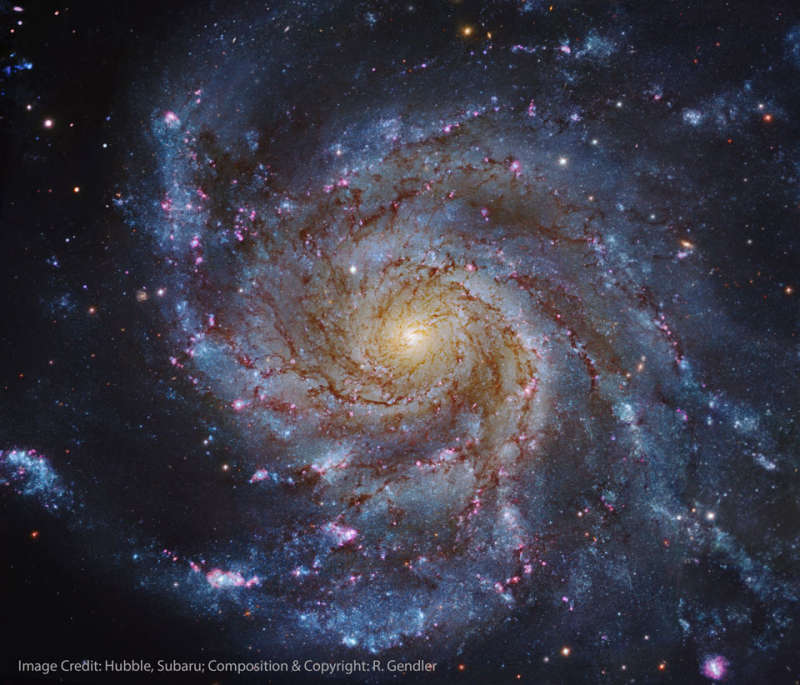
|
Credit & Copyright: Robert Gendler
Explanation:
Why do many galaxies appear as
spirals?
A striking example is
M101,
shown above,
whose relatively close distance of about 27 million
light years allows it to be studied
in some detail.
Observational evidence indicates that a
close gravitational interaction with a neighboring galaxy created
waves of high mass and condensed gas which
continue to orbit the galaxy center.
These
waves compress existing gas and cause
star
formation.
One result is that
M101, also called the
Pinwheel Galaxy, has several extremely
bright star-forming regions
(called HII regions) spread across its spiral arms.
M101 is so large that its
immense gravity distorts
smaller nearby galaxies.
|
January February March April May June July August September October November December |
| ||||||||||||||||||||||||||||||||||||||||||||||||
NASA Web Site Statements, Warnings, and Disclaimers
NASA Official: Jay Norris. Specific rights apply.
A service of: LHEA at NASA / GSFC
& Michigan Tech. U.
Based on Astronomy Picture
Of the Day
Publications with keywords: M 101 - spiral galaxy - spiral arms
Publications with words: M 101 - spiral galaxy - spiral arms
See also:
- Portrait of NGC 1055
- APOD: 2025 September 4 Á NGC 4565: Galaxy on Edge
- APOD: 2025 August 22 Á A Tale of Two Nebulae
- APOD: 2025 August 19 Á Giant Galaxies in Pavo
- APOD: 2025 August 18 Á NGC 1309: A Useful Spiral Galaxy
- APOD: 2025 July 4 Á NGC 6946 and NGC 6939
- APOD: 2025 June 30 Á NGC 4651: The Umbrella Galaxy
